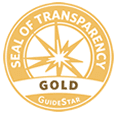Alternate nostril breathing gets its roots from yoga and practicing breath regulation, called pranayama. This kind of breath work is common in meditation and yoga, and can also be done by itself to help clear your head and focus on your breath. There are a few different ways to do it, each with different benefits and risks, and it’s free to do outside of a yoga studio. In this blog, we’ll tell you all about alternate nostril breathing, the pros and cons, and give you a tutorial on how to achieve it.
There are two different variations of alternate nostril breathing that yoga fans practice:
- Anulom vilom, which involves inhaling through one nostril and exhaling through the other.
- Nadi shodhana, which is similar to anulom vilom, where you inhale through one nostril and exhale through the other, but on the inhale, you hold the breath for a brief period.
Try both versions in your meditation and/or yoga practice and see how each one feels for you. A lack of technique makes it difficult to identify the perks, according to a 2017 review of clinical studies, so make sure to try each one properly before you make a decision– and don’t worry, we’ll give a brief tutorial on how to do both later on.
First, what are the benefits of incorporating alternate nostril breathing into your lifestyle? For a few quick perks, alternate nostril breathing can help reduce anxiety and relax your body and mind, as well as improve your overall well-being. By improving your well-being with these techniques, you can expect to be more focused in your work and aware of your surroundings. For Veterans, maintaining focus can be difficult, especially with different stressors that could trigger anxiety or panic attacks. Alternate nostril breathing is a non-intrusive, inexpensive way to help calm your body down and be more mindful of the present.
Alternate nostril breathing can also improve lung function and respiratory endurance, which can improve athletic endurance. A 2017 study examined pranayama’s benefits on competitive swimmers and noted that the swimmers had a positive impact on their respiratory endurance, thanks to alternate nostril breathing. Alternate nostril breathing has also been shown to have a positive impact on mental health, as it helps reduce stress and anxiety, and extended benefits include less fatigue and improvements to metabolic functions in the body.
Another benefit of alternate nostril breathing is how it regulates your nervous system. Activated by stress, your body interprets stress as danger and reacts to prepare you for the worst. If you’re constantly stressed, this response from your nervous system is continually activated and can lead to health problems down the line, like heart disease and high blood pressure. Controlling your breathing and regulating it will engage your rest and digest state, which starts the relaxation response, allowing your body to heal and recover from the stress. With regular practice of alternate nostril breathing, your body and your nervous system will rebalance itself and your stress levels will decrease.
One of the most impressive benefits of alternate nostril breathing is its ability to improve cardiovascular functions. A study from 2020 looked into alternate nostril breathing and its cardiovascular benefits with 100 healthy medical students; after a month of practice, the participants showed improvement in pulse and blood pressure markers. Alternate nostril breathing is a potential practice to help reduce risk factors of cardiovascular disease, as well as lowering stress and blood pressure levels. Pranayama can also help lower your heart rate both long-term and in the moment of an anxiety spike. While further research is needed to find more about alternate nostril breathing and its health benefits, overall, it proves to be a useful resource for Veterans in need of a quick relaxing fix.
Alternate nostril breathing is safe for most people, but if you have any sort of lung or heart concerns, like asthma, talk with your doctor before starting your practice. If you practice alternate nostril breathing and experience dizziness, nausea, or shortness of breath, stop practice; this also goes for if the breathing makes you feel agitated or triggers any other mental/physical symptoms. Consult a medical professional if you’re not sure if alternate nostril breathing will work well for you.
So, how do you practice alternate nostril breathing? You can technically practice breathing anywhere, but may want to consult a yoga teacher to make sure you’re doing it correctly first. Most importantly, focus on keeping your breathing continuous, slow, and smooth. Focusing on that will help you retain where you are in the practice.
In order to practice alternate nostril breathing, sit somewhere comfortable with your legs crisscrossed. Place one hand in your lap and lift your opposite hand up towards your nose. Exhale completely, then use your thumb to close one nostril. Inhale through the open nostril, and at the peak of the inhale, close that nostril with your fingers. (Please note: if you’re following the nadi shodhana variation, hold your inhale here for two to three seconds.) Open the first nostril that you closed with your thumb and exhale through it. Then, inhale through that same nostril, close it again, and open the other nostril to exhale through it. That’s one cycle! Continue this for up to five minutes, and always make sure to complete your practice with an exhale through your left nostril.
You can practice alternate nostril breathing whenever you need to and at whatever point feels most comfortable for you. There are different times and places that work best for everyone, but please note not to practice alternate nostril breathing when you’re sick or congested, as it may do more harm than good. While breathing techniques like this aren’t a substitute for medical treatment, alternate nostril breathing can help you regulate your heart rate, manage stress and anxiety, and even reduce risks of cardiovascular disease. As always, talk to your doctor first before you start practicing this breathing technique, but with regular practice you can see and maintain good results. If you’re looking for meditation and therapy aimed specifically at Veterans, Operation Red Wings Foundation employs multiple techniques to help you ground yourself and find inner peace over time and practice.






